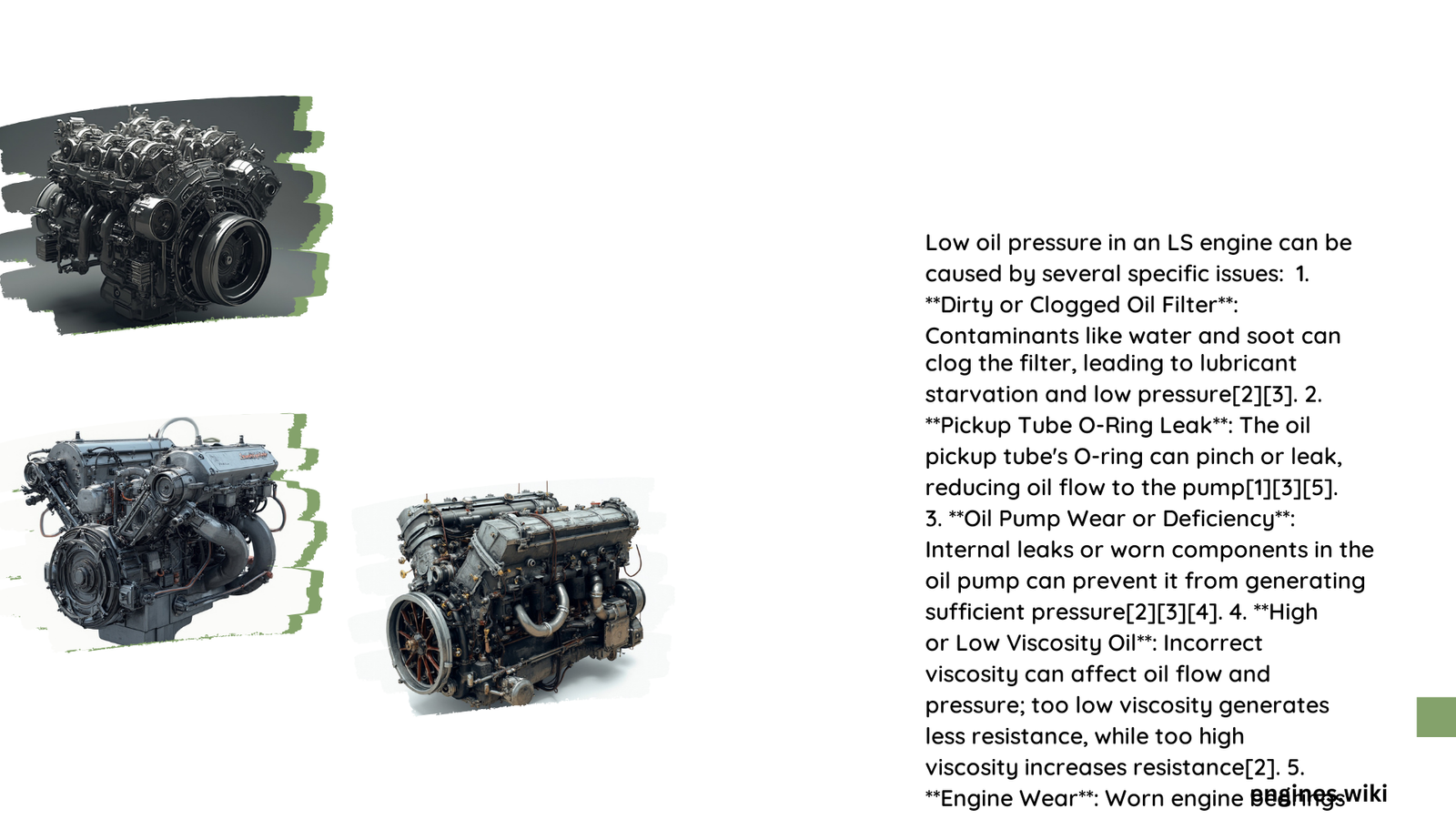Low oil pressure in LS engines can be a critical warning sign of potential mechanical failures that could lead to catastrophic engine damage. Understanding the root causes is essential for preventing costly repairs and maintaining optimal engine performance. From oil pump malfunctions to internal wear patterns, multiple factors can contribute to reduced oil pressure, requiring careful diagnosis and timely intervention.
What Triggers Low Oil Pressure in LS Engines?
How Does Oil Pump Failure Impact Engine Performance?
Symptoms of Oil Pump Deterioration
- Pressure Drop Indicators
- Oil pressure gauge reading below 20 psi
- Inconsistent pressure at idle
- Warning lights activated on dashboard
| Failure Mode | Potential Consequences | Estimated Repair Cost |
|---|---|---|
| O-ring Crack | Air leak, reduced suction | $15 – $30 |
| Pump Wear | Complete pressure loss | $200 – $500 |
Critical Inspection Points
- Check oil pickup tube integrity
- Examine O-ring condition
- Measure oil pump performance
- Verify screen clearance
What Role Does Engine Wear Play in Oil Pressure Reduction?
Mechanical Wear Patterns
- Cam Bearing Degradation
- Increased clearances
- Blocked oil passages
- Reduced lubrication efficiency
Tolerance Breakdown
- Crankshaft snout wear
- Cylinder wall scoring
- Bearing surface deterioration
How Can Oil Viscosity Affect Pressure Dynamics?
Temperature-Related Considerations
- Viscosity Grade Selection
- 5W-30 for standard conditions
- 10W-40 for extreme temperatures
- Synthetic oils provide better stability
Performance Implications
- Maintains consistent pressure
- Reduces friction
- Enhances lubrication efficiency
What Diagnostic Steps Reveal Oil Pressure Issues?
Comprehensive Troubleshooting
- Use professional diagnostic tools
- Perform pressure gauge tests
- Inspect sending unit functionality
- Check for mechanical obstructions
How to Prevent Chronic Oil Pressure Problems?
Proactive Maintenance Strategies
- Regular oil changes
- Use high-quality lubricants
- Monitor engine performance
- Address warning signs immediately
Technical Recommendations
Replacement Considerations
- High-volume oil pumps
- Performance-grade components
- Professional installation
Key Takeaways

- Low oil pressure signals potential engine damage
- Multiple factors contribute to pressure reduction
- Timely diagnosis prevents catastrophic failures
Technical Specifications
- Recommended oil pressure: 25-65 psi
- Idle pressure threshold: 10-20 psi
- Critical wear limit: Below 10 psi
Warning: Immediate Action Required
If persistent low oil pressure is detected, cease engine operation and conduct thorough diagnostic evaluation to prevent irreversible damage.
Expert Tip
Invest in periodic professional inspections to catch early signs of oil system degradation and maintain optimal LS engine performance.
